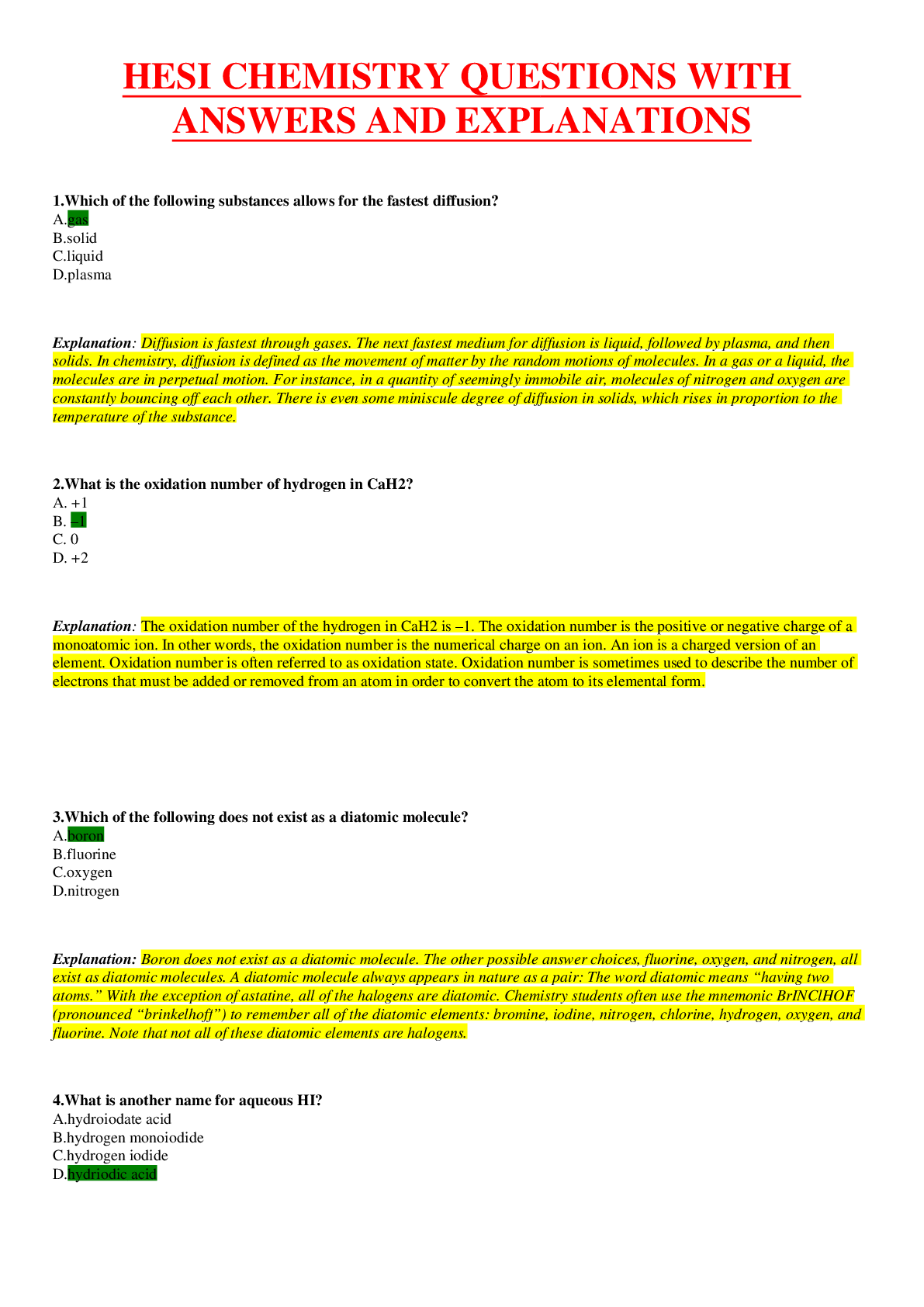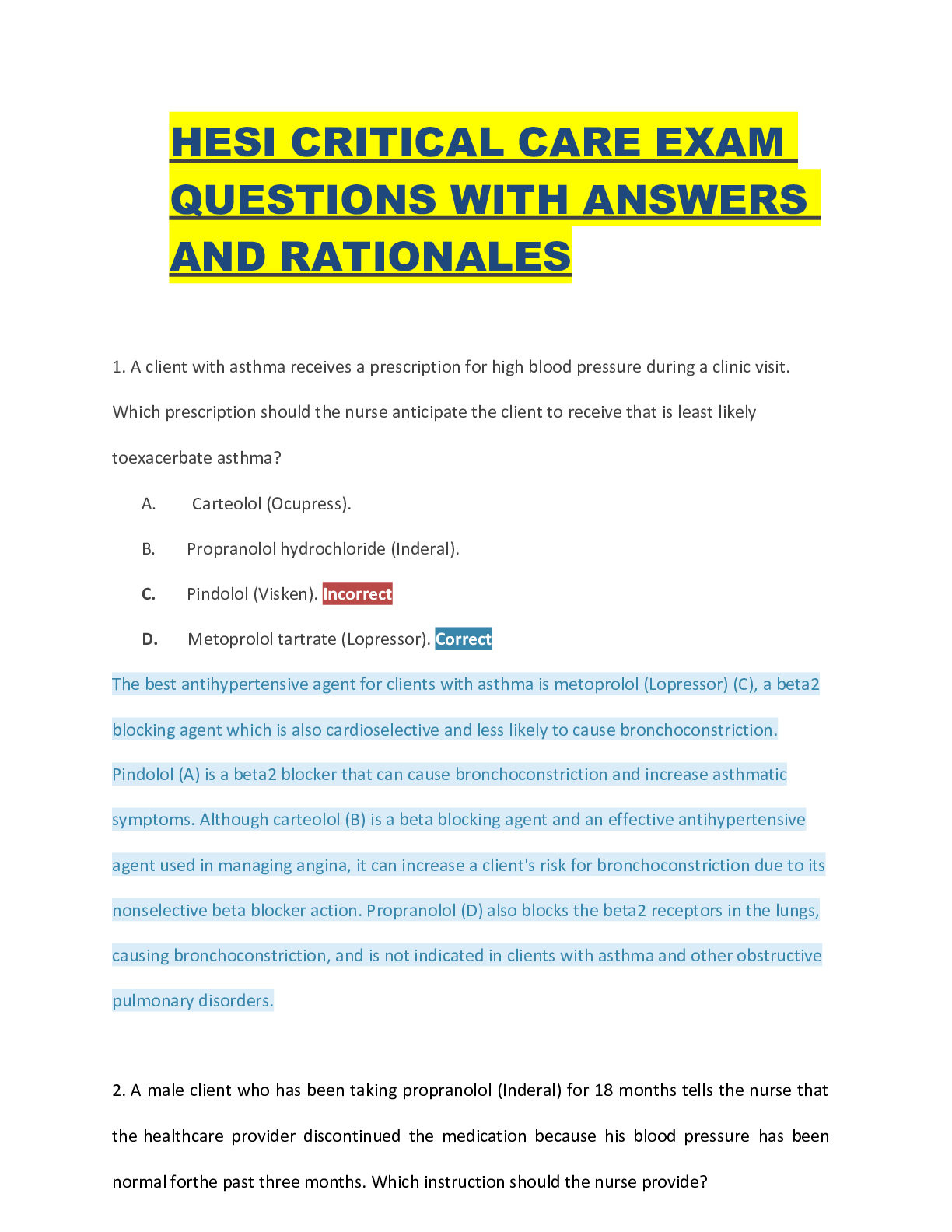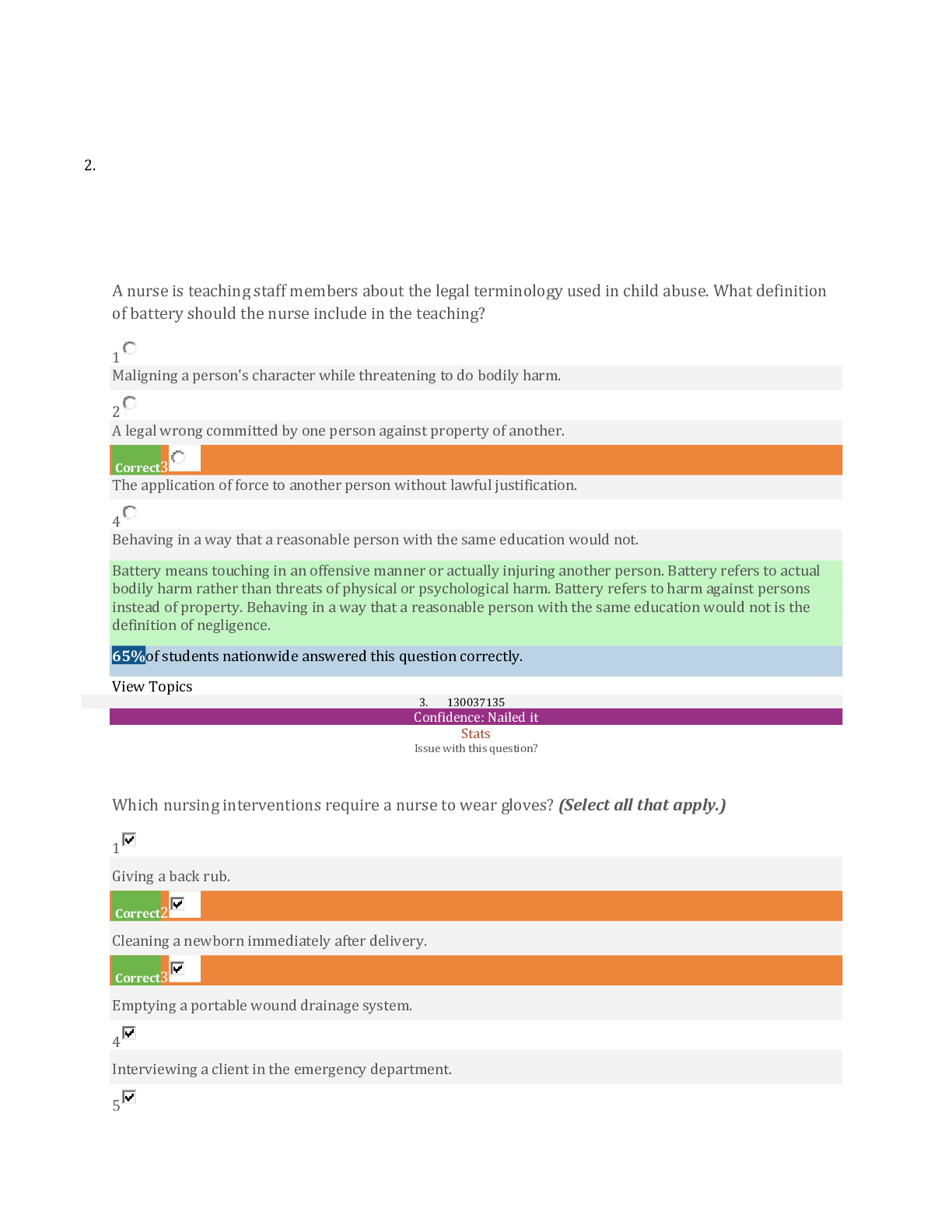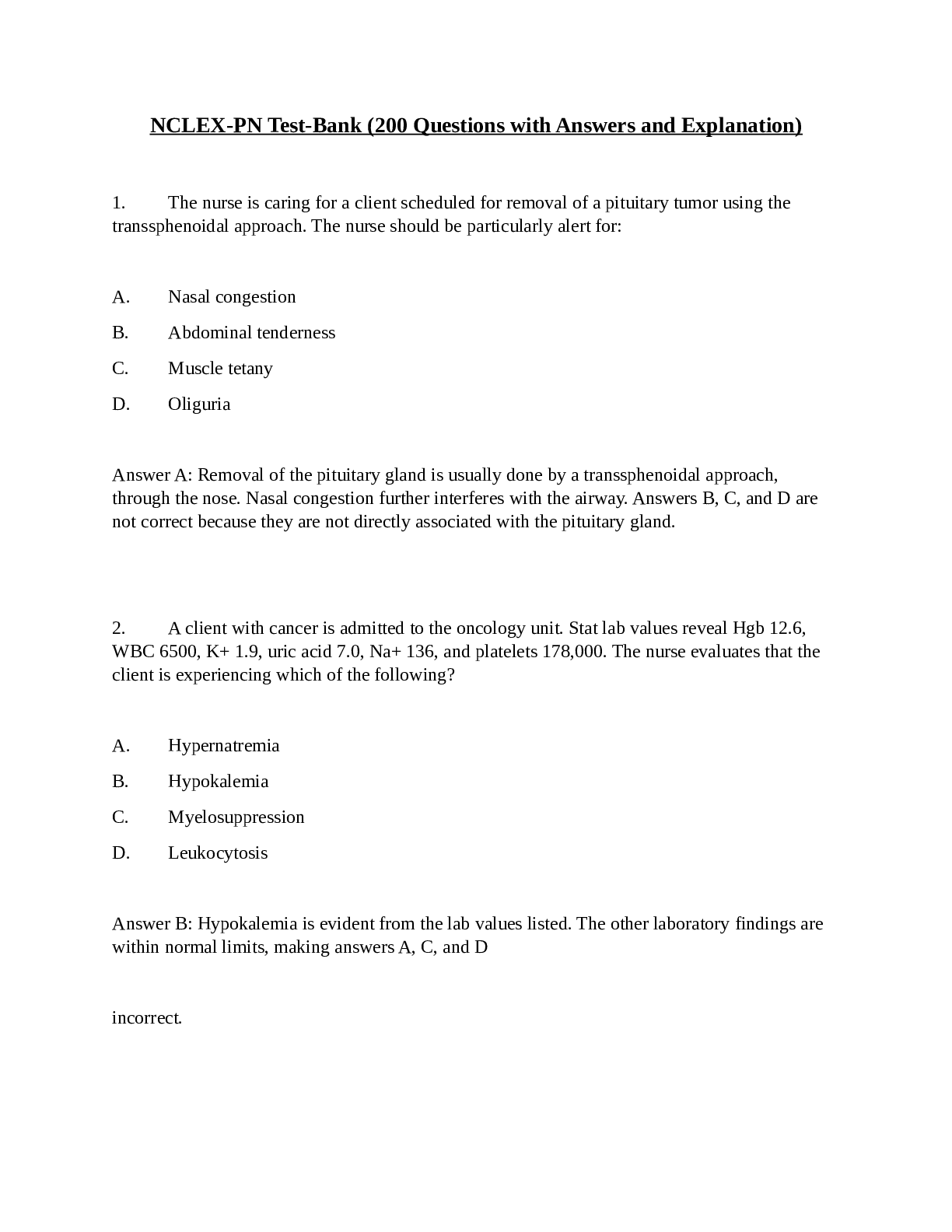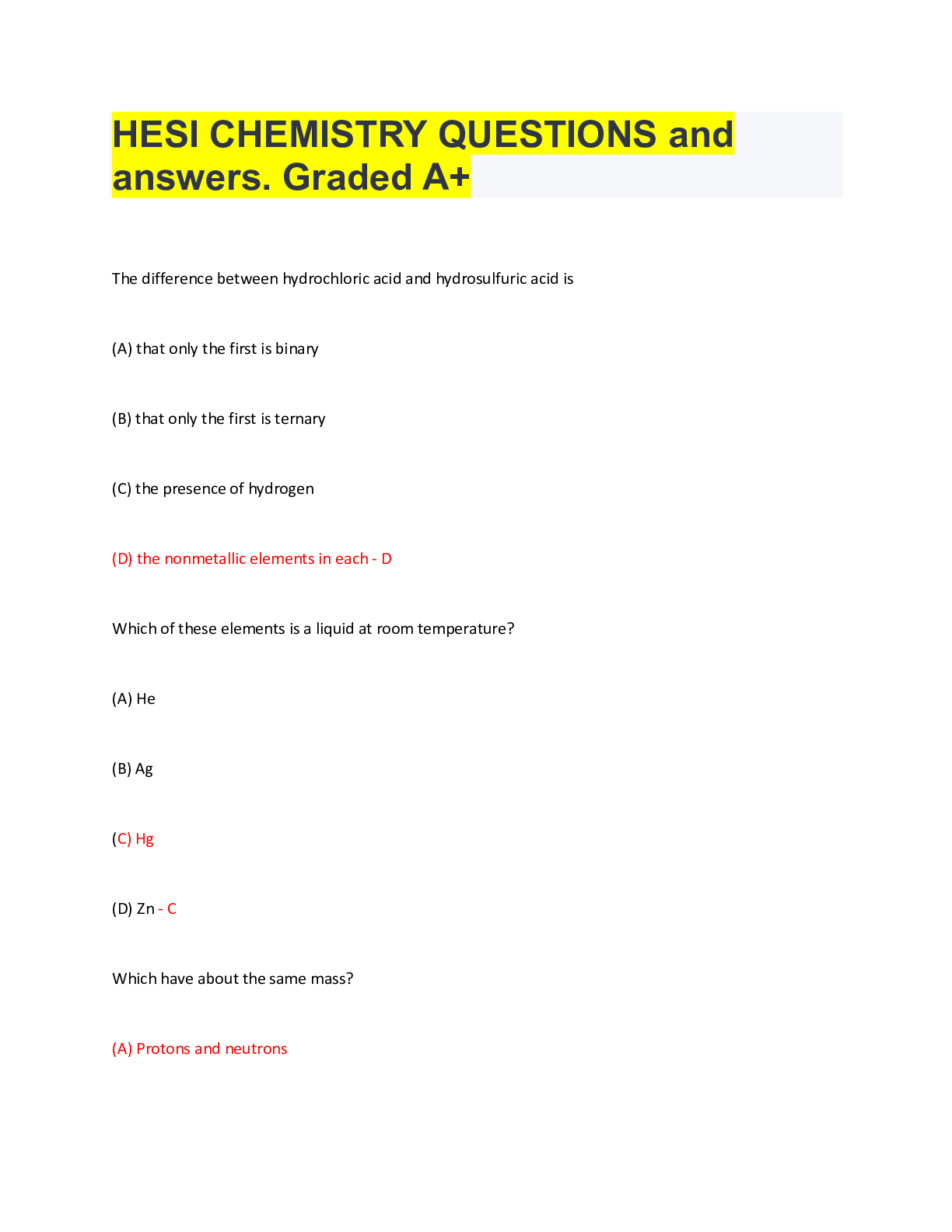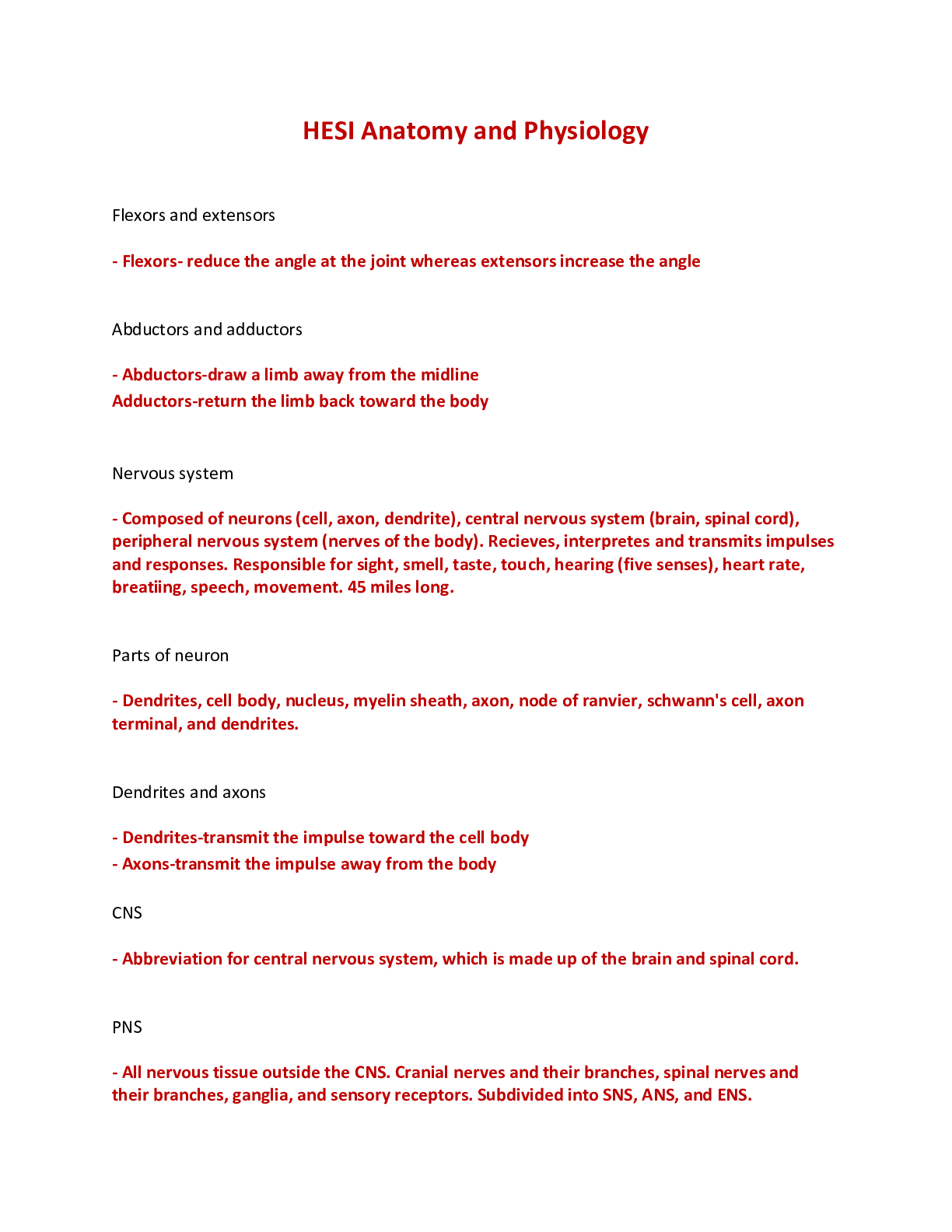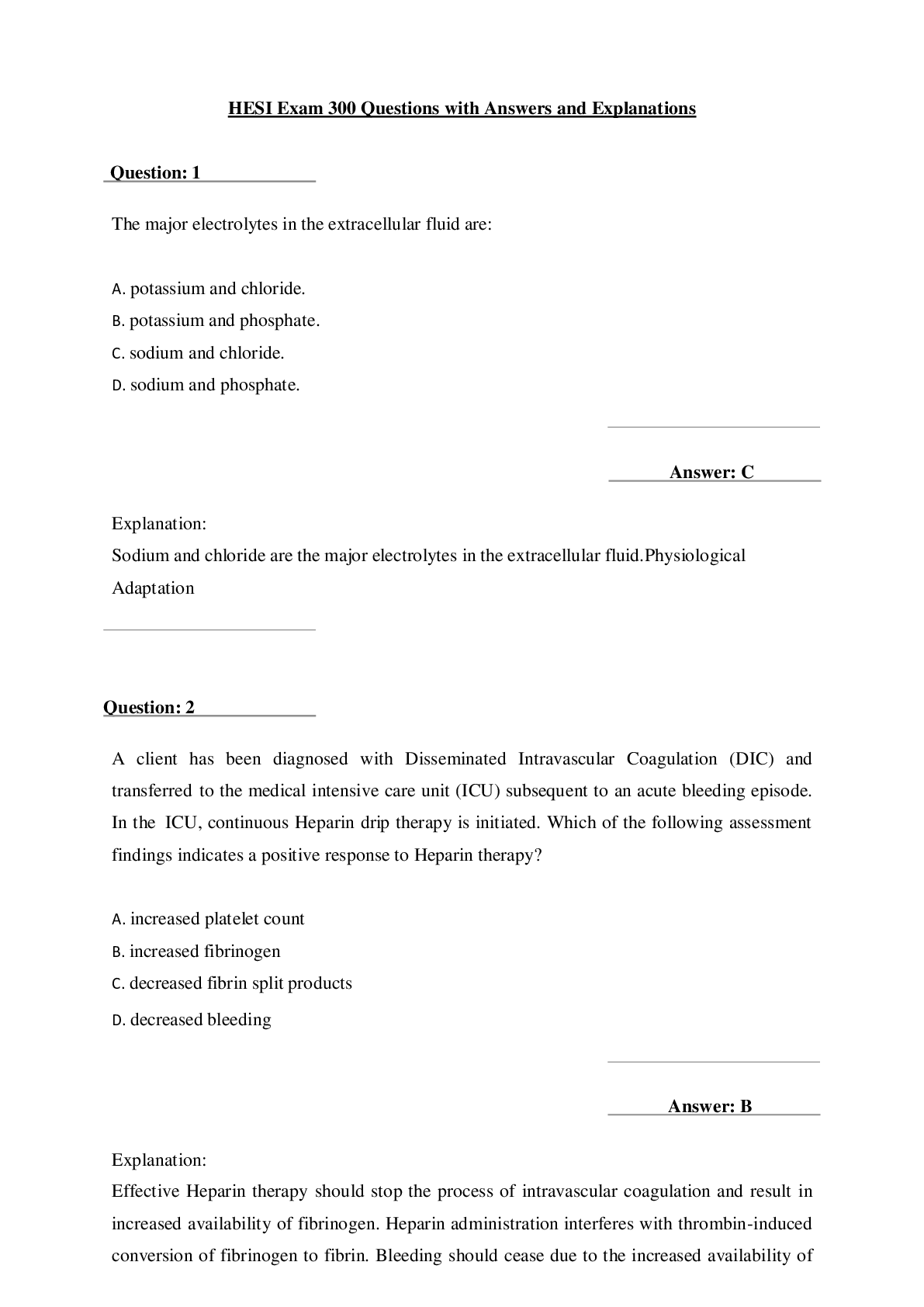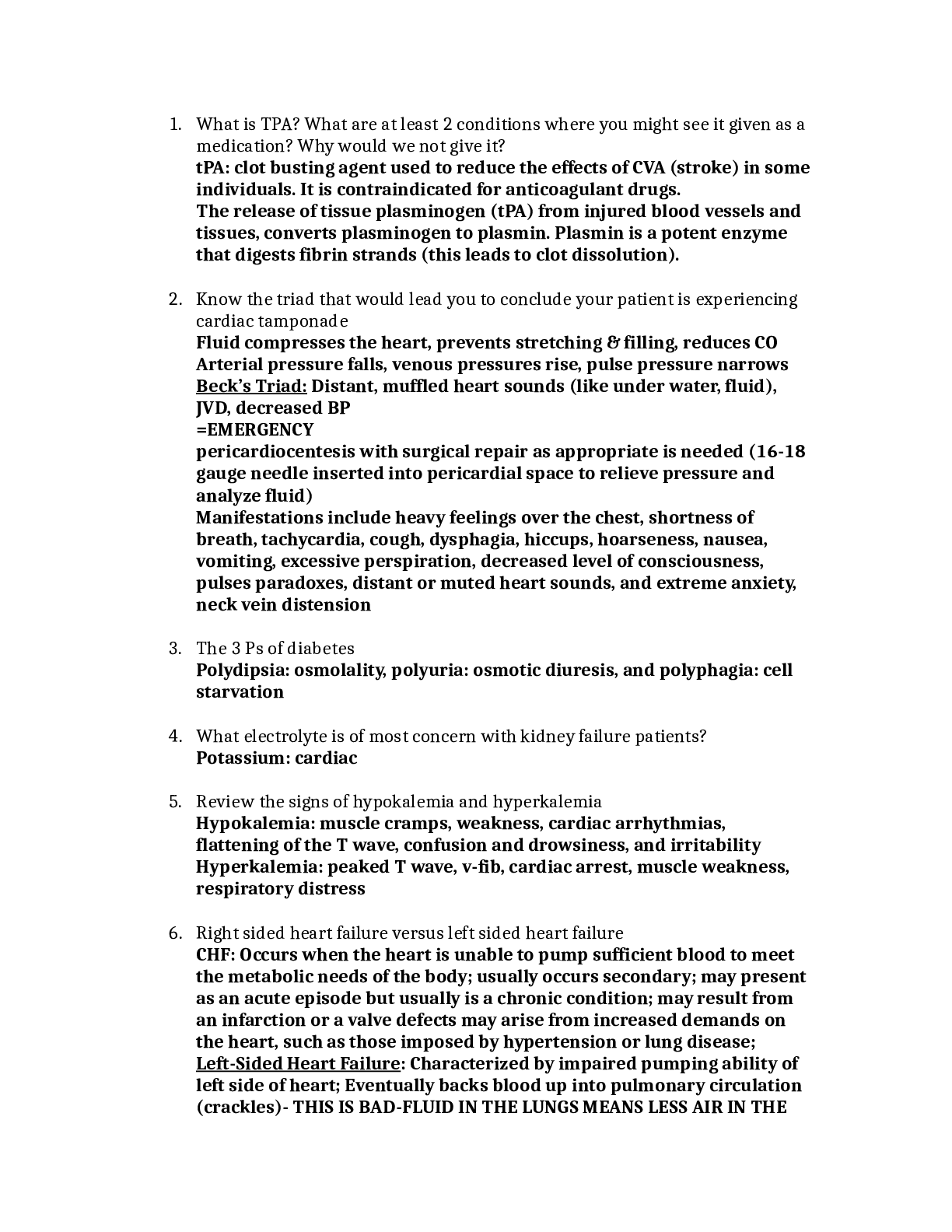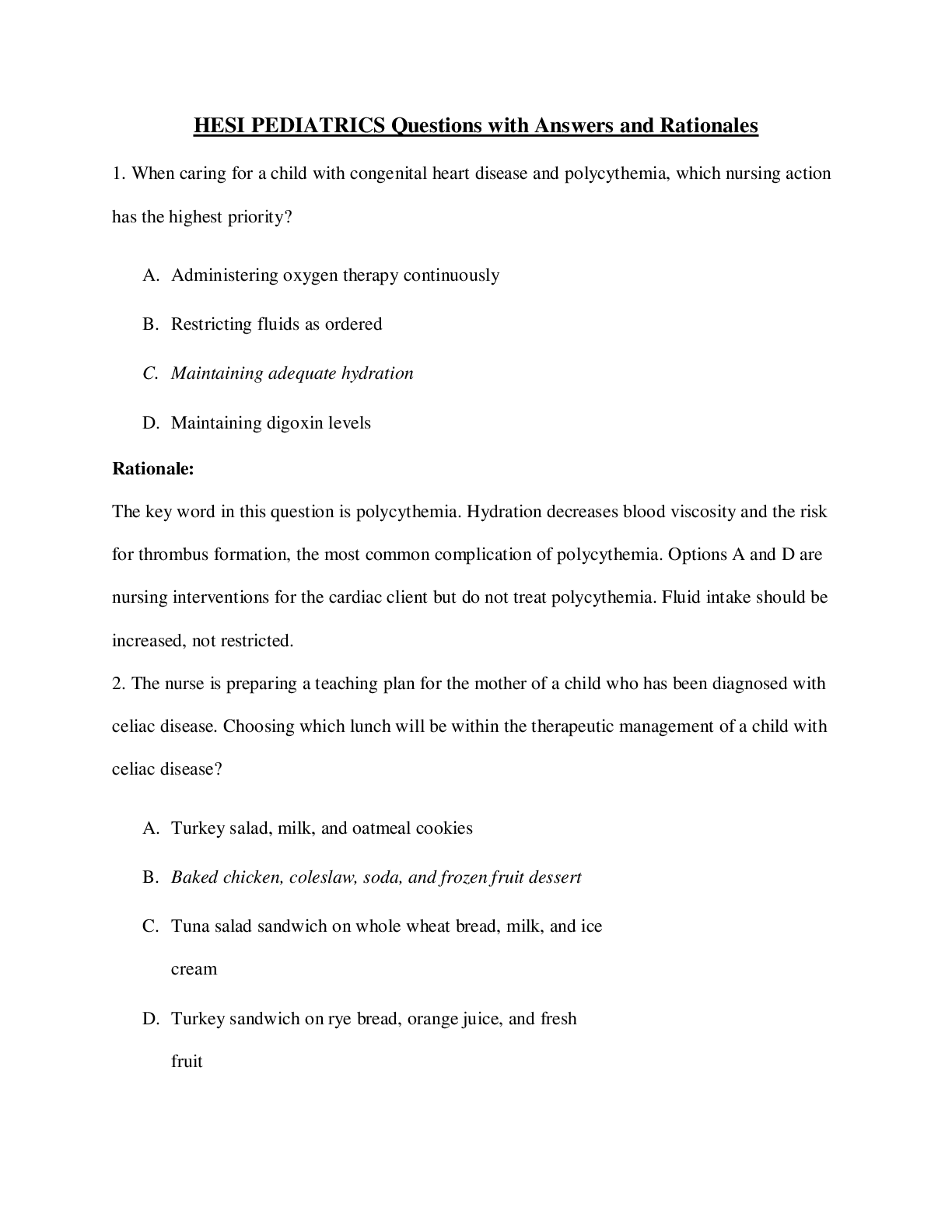HESI A2 HESI Chemistry Questions with Answers and Explanations.
Document Content and Description Below
HESI Chemistry Questions with Answers and Explanations 1. Which of the following substances allows for the fastest diffusion? A. gas B. solid C. liquid D. plasma Explanation: Diffusion is fastes... t through gases. The next fastest medium for diffusion is liquid, followed by plasma, and then solids. In chemistry, diffusion is defined as the movement of matter by the random motions of molecules. In a gas or a liquid, the molecules are in perpetual motion. For instance, in a quantity of seemingly immobile air, molecules of nitrogen and oxygen are constantly bouncing off each other. There is even some miniscule degree of diffusion in solids, which rises in proportion to the temperature of the substance. 2. What is the oxidation number of hydrogen in CaH2? A. +1 B. –1 C. 0 D. +2 Explanation: The oxidation number of the hydrogen in CaH2 is –1. The oxidation number is the positive or negative charge of a monoatomic ion. In other words, the oxidation number is the numerical charge on an ion. An ion is a charged version of an element. Oxidation number is often referred to as oxidation state. Oxidation number is sometimes used to describe the number of electrons that must be added or removed from an atom in order to convert the atom to its elemental form. 3. Which of the following does not exist as a diatomic molecule? A. boron B. fluorine C. oxygen D. nitrogen Explanation: Boron does not exist as a diatomic molecule. The other possible answer choices, fluorine, oxygen, and nitrogen, all exist as diatomic molecules. A diatomic molecule always appears in nature as a pair: The word diatomic means “having two atoms.” With the exception of astatine, all of the halogens are diatomic. Chemistry students often use the mnemonic BrINClHOF (pronounced “brinkelhoff”) to remember all of the diatomic elements: bromine, iodine, nitrogen, chlorine, hydrogen, oxygen, and fluorine. Note that not all of these diatomic elements are halogens. 4. What is another name for aqueous HI? A. hydroiodate acid B. hydrogen monoiodide C. hydrogen iodide D. hydriodic acid Explanation: Hydriodic acid is another name for aqueous HI. In an aqueous solution, the solvent is water. Hydriodic acid is a polyatomic ion, meaning that it is composed of two or more elements. When this solution has an increased amount of oxygen, the -ate suffix on the first word is converted to -ic. The HESI exam will require you to know the fundamentals of naming chemicals. This process can be quite complex, so you should carefully review this material before your exam. 5. Which of the following could be an empirical formula? A. C4H8 B. C2H6 C. CH D. C3H6 Explanation: CH could be an empirical formula. An empirical formula is the smallest expression of a chemical formula. To be empirical, a formula must be incapable of being reduced. For this reason, answer choices A, B, and D are incorrect, as they could all be reduced to a simpler form. Note that empirical formulas are not the same as compounds, which do not have to be irreducible. Two compounds can have the same empirical formula but different molecular formulas. The molecular formula is the actual number of atoms in the molecule. 6. What is the name for the reactant that is entirely consumed by the reaction? A. limiting reactant B. reducing agent C. reaction intermediate D. reagent Explanation: A limiting reactant is entirely used up by the chemical reaction. Limiting reactants control the extent of the reaction and determine the quantity of the product. A reducing agent is a substance that reduces the amount of another substance by losing electrons. A reagent is any substance used in a chemical reaction. Some of the most common reagents in the laboratory are sodium hydroxide and hydrochloric acid. The behavior and properties of these substances are known, so they can be effectively used to produce predictable reactions in an experiment. 7. What is the name for the horizontal rows of the periodic table? A. groups B. periods C. families D. sets Explanation: The horizontal rows of the periodic table are called periods. The vertical columns of the periodic table are known as groups or families. All of the elements in a group have similar properties. The relationships between the elements in each period are similar as you move from left to right. The periodic table was developed by Dmitri Mendeleev to organize the known elements according to their similarities. New elements can be added to the periodic table without necessitating a redesign. 8. What is the mass (in grams) of 7.35 mol water? A. 10.7 g B. 18 g C. 132 g D. 180.6 g Explanation: The mass of 7.35 mol water is 132 grams. You should be able to find the mass of various chemical compounds when you are given the number of mols. The information required to perform this function is included on the periodic table. To solve this problem, find the molecular mass of water by finding the respective weights of hydrogen and oxygen. Remember that water contains two hydrogen molecules and one oxygen molecule. The molecular mass of hydrogen is roughly 1, and the molecular mass of oxygen is roughly 16. A molecule of water, then, has approximately 18 grams of mass. Multiply this by 7.35 mol, and you will obtain the answer 132.3, which is closest to answer choice C. 9. Which of the following orbitals is the last to fill? A. 1s B. 3s C. 4p D. 6s Explanation: Of these orbitals, the last to fill is 6s. Orbitals fill in the following order: 1s, 2s, 2p, 3s, 3p, 4s, 3d, 4p, 5s, 4d, 5p, 6s, 4f, 5d, 6p, 7s, 5f, 6d, and 7p. The number is the orbital number, and the letter is the sublevel identification. Sublevel s has one orbital and can hold a maximum of two electrons. Sublevel p has three orbitals and can hold a maximum of six electrons. Sublevel d has five orbitals and can hold a maximum of 10 electrons. Sublevel f has seven orbitals and can hold a maximum of 14 electrons. 10. What is the name of the binary molecular compound NO5? [Show More]
Last updated: 1 year ago
Preview 1 out of 14 pages
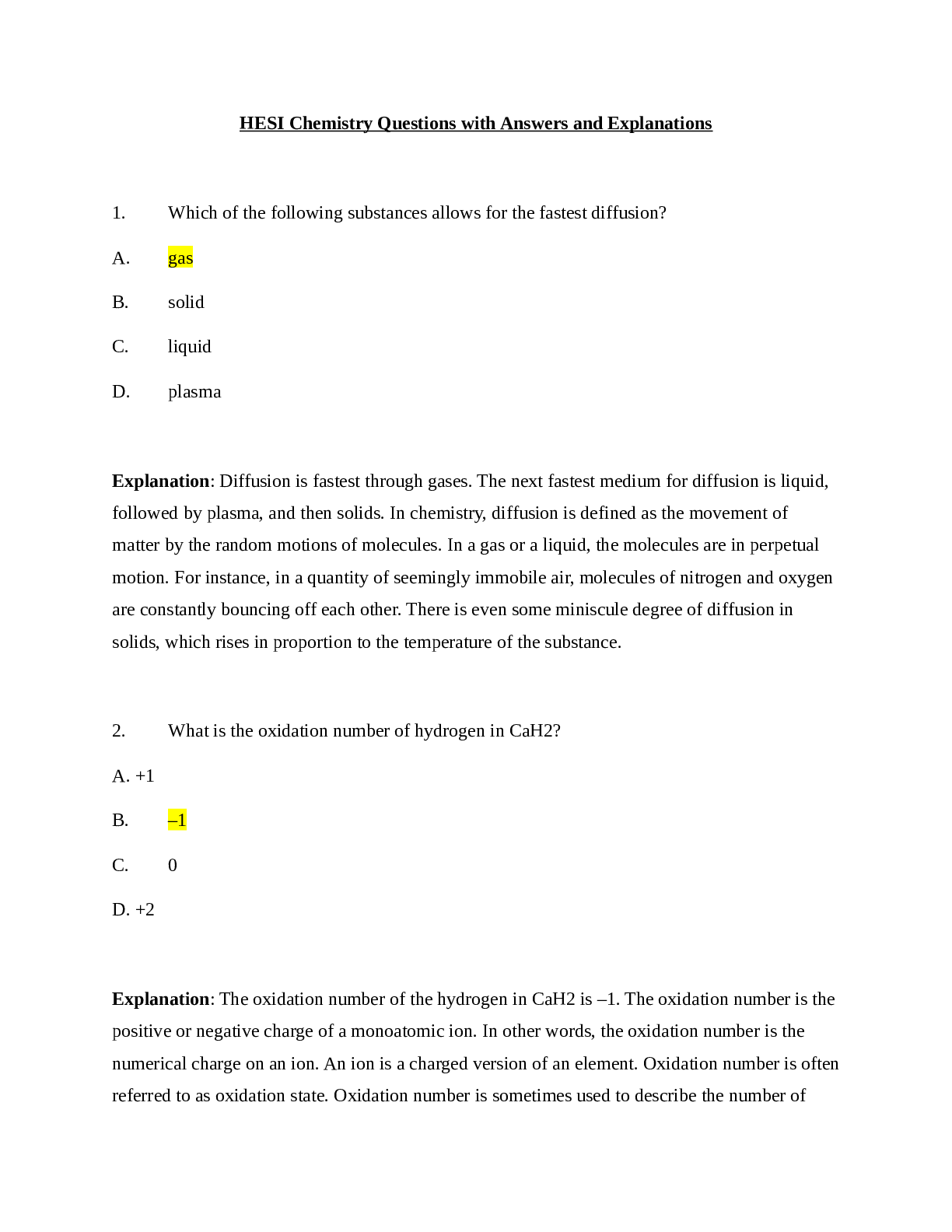
Reviews( 0 )
Document information
Connected school, study & course
About the document
Uploaded On
Jun 16, 2021
Number of pages
14
Written in
Additional information
This document has been written for:
Uploaded
Jun 16, 2021
Downloads
0
Views
63



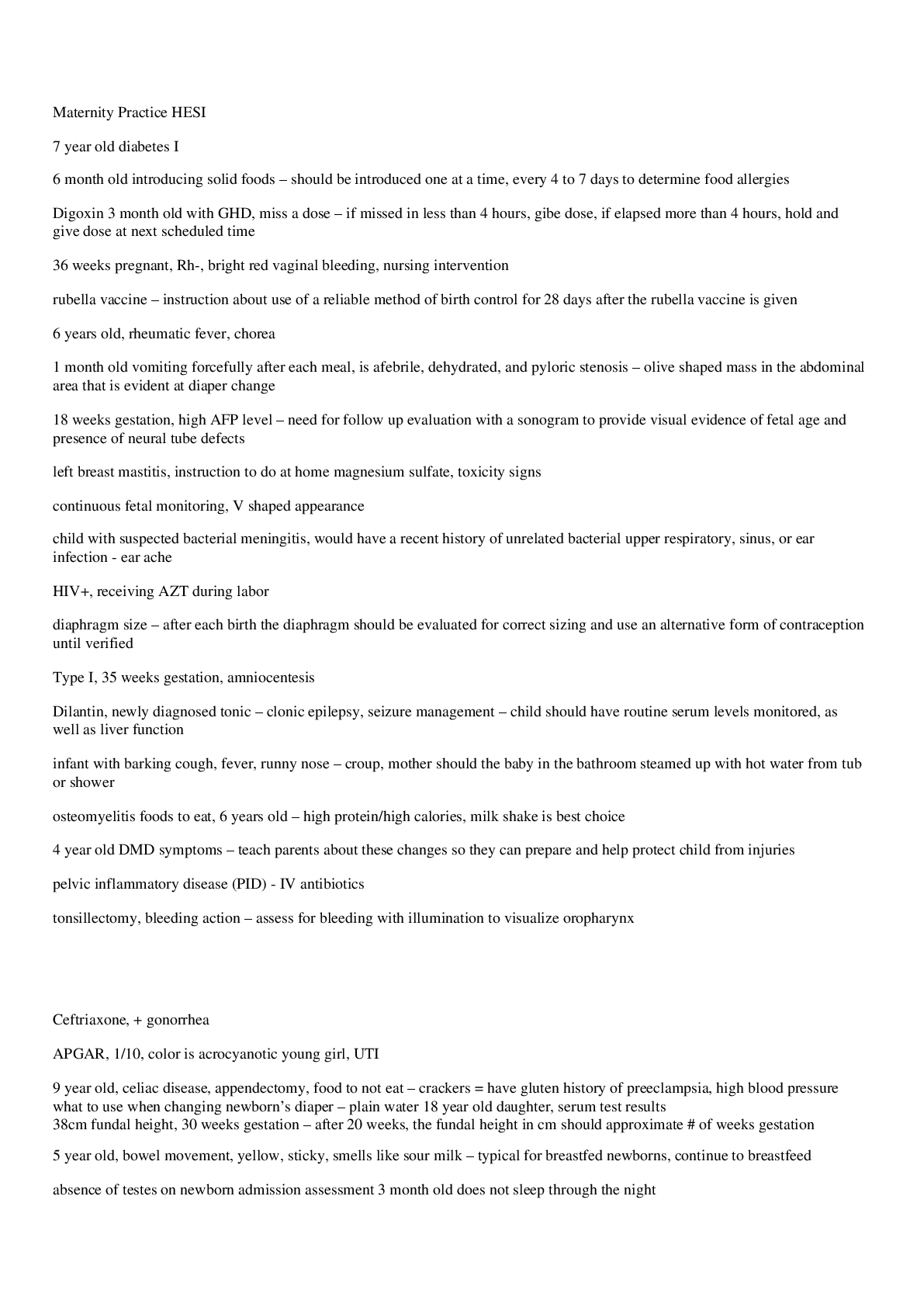

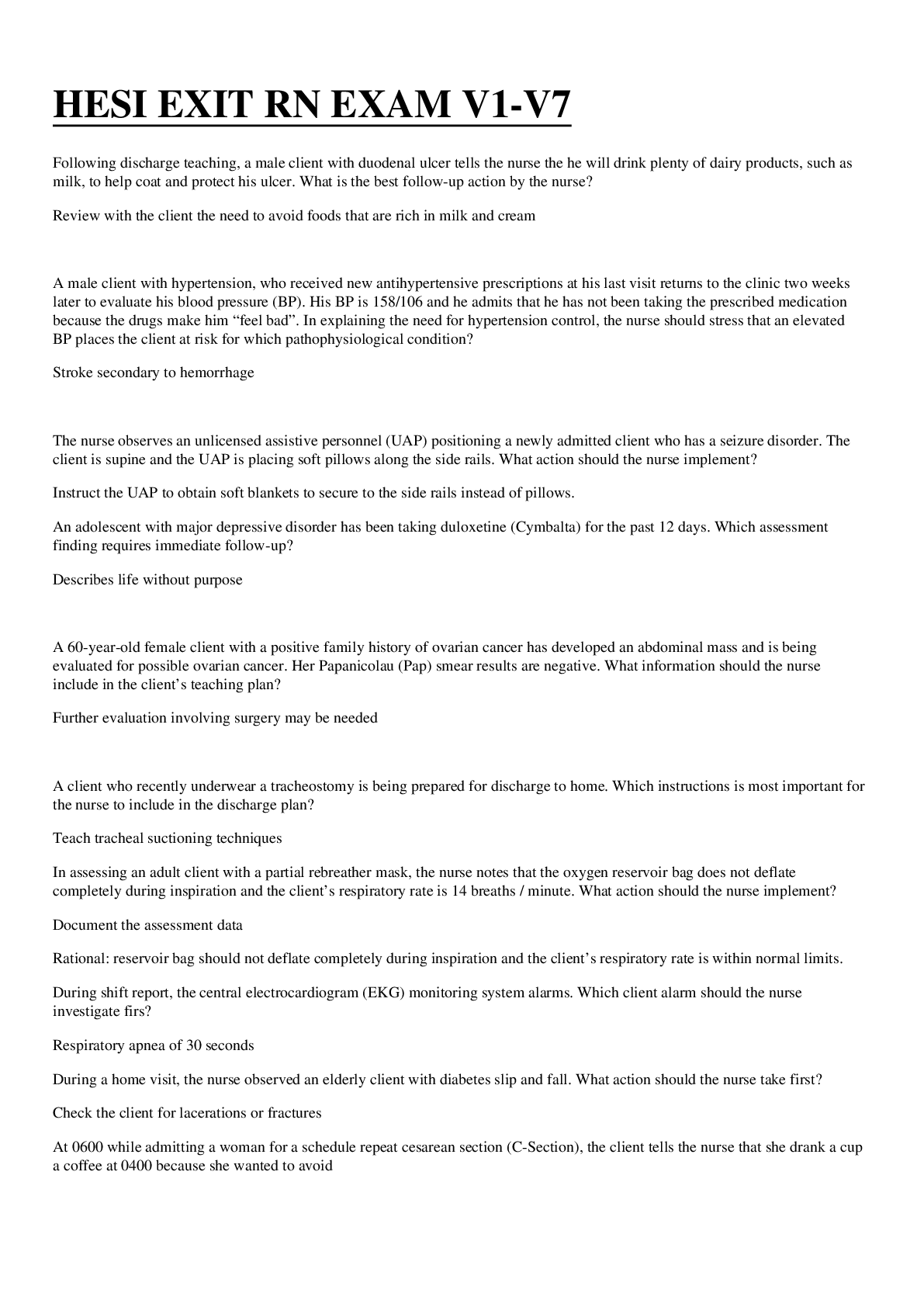



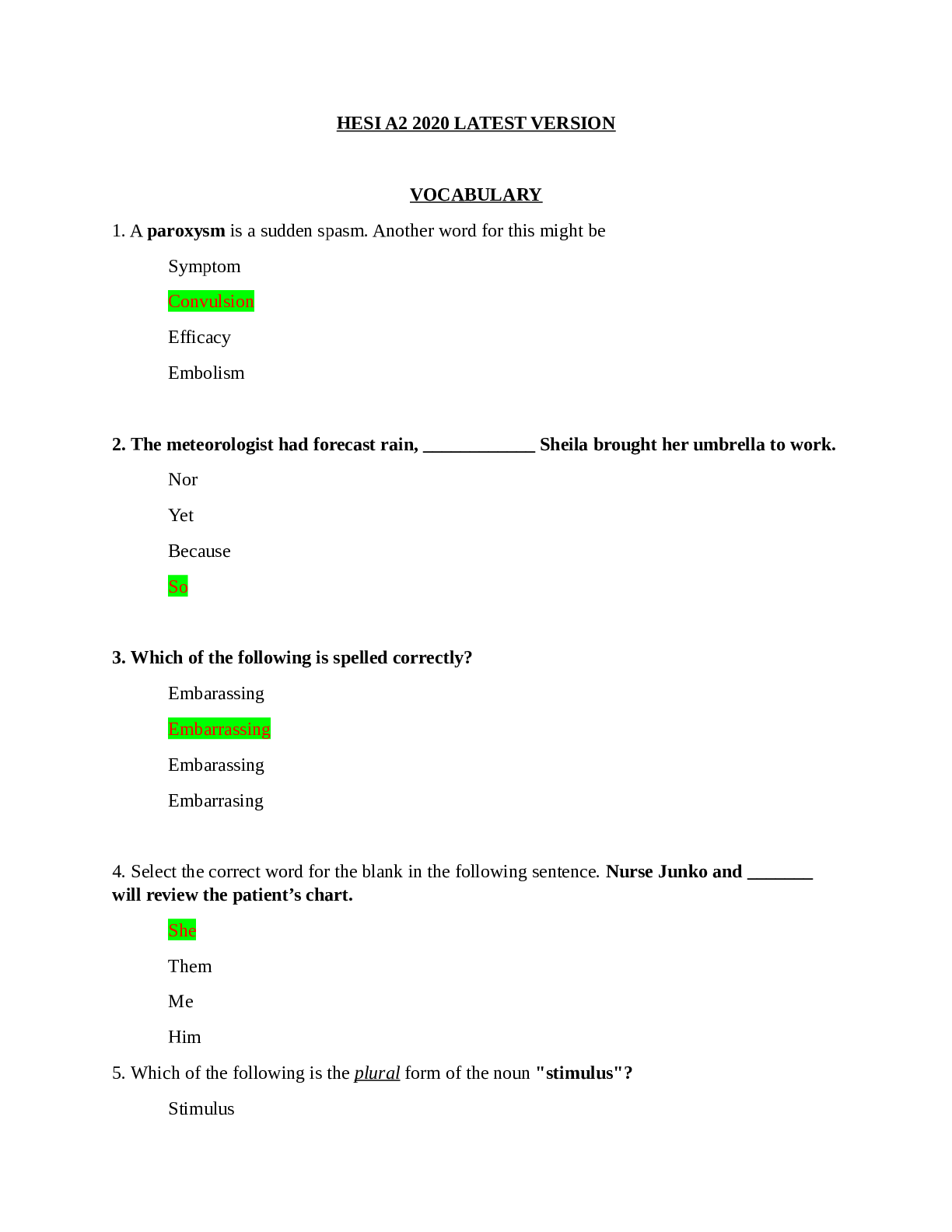



.png)
 - Copy.png)

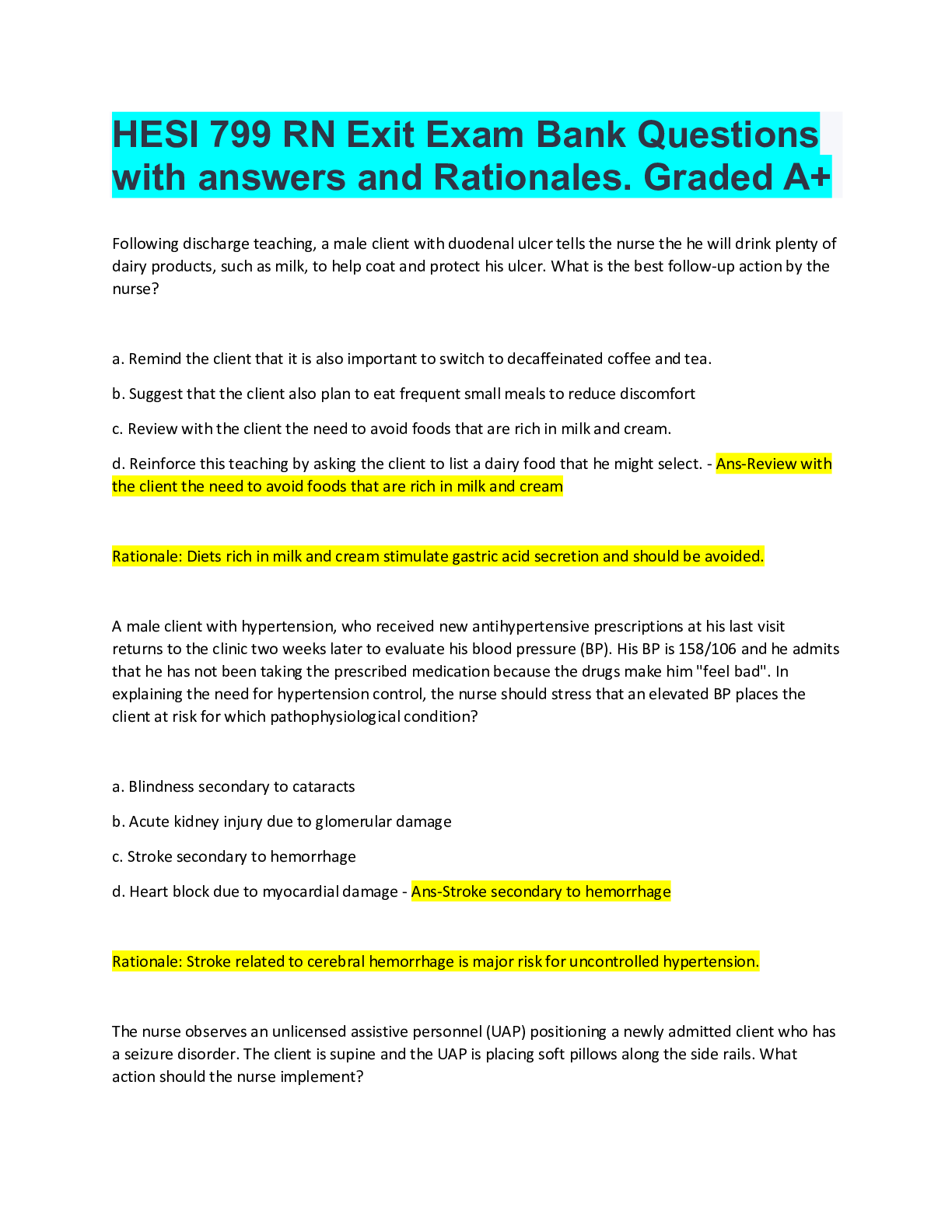
.png)
